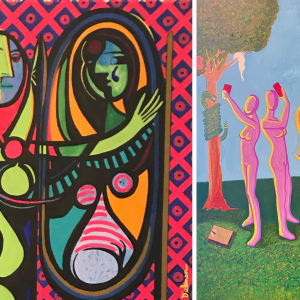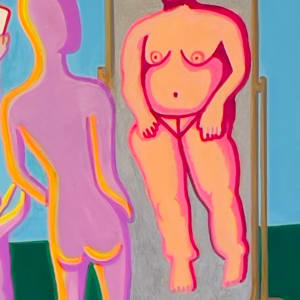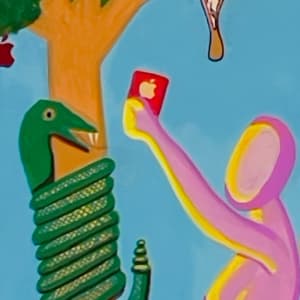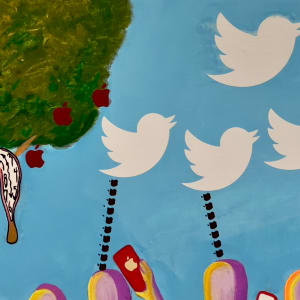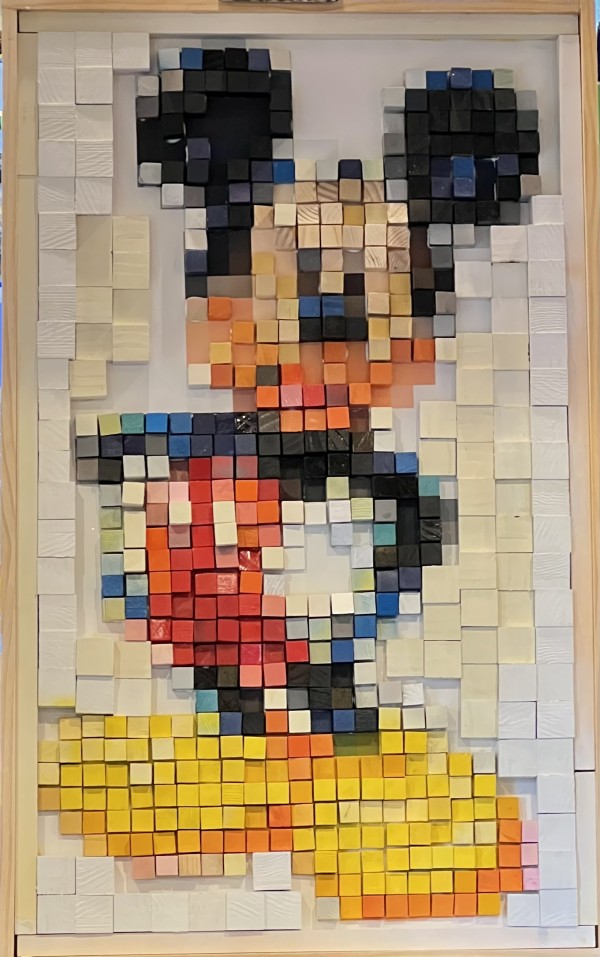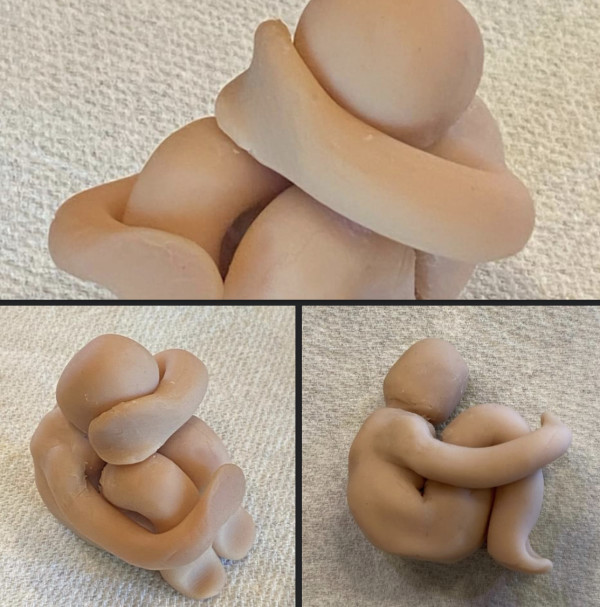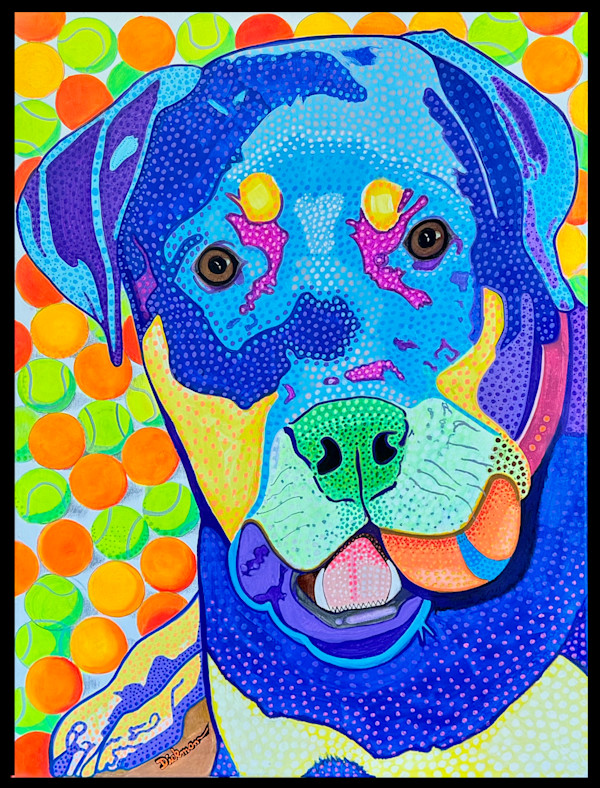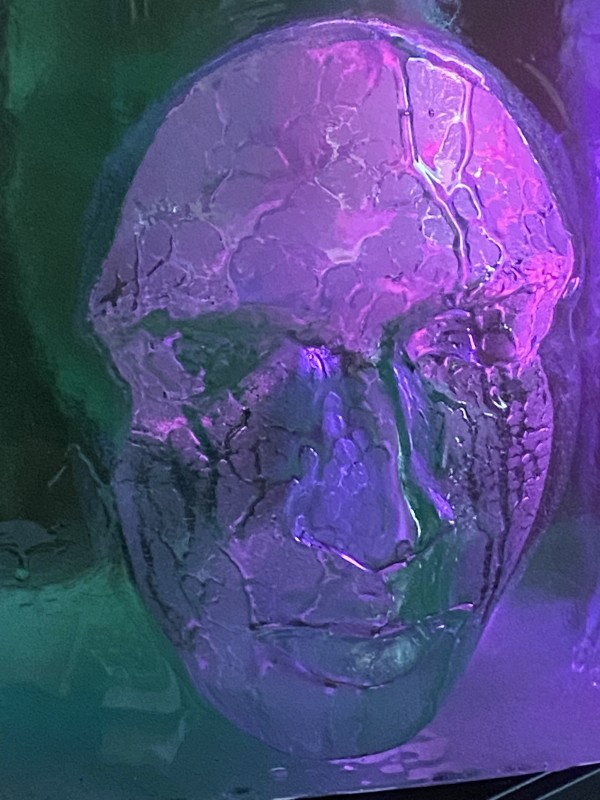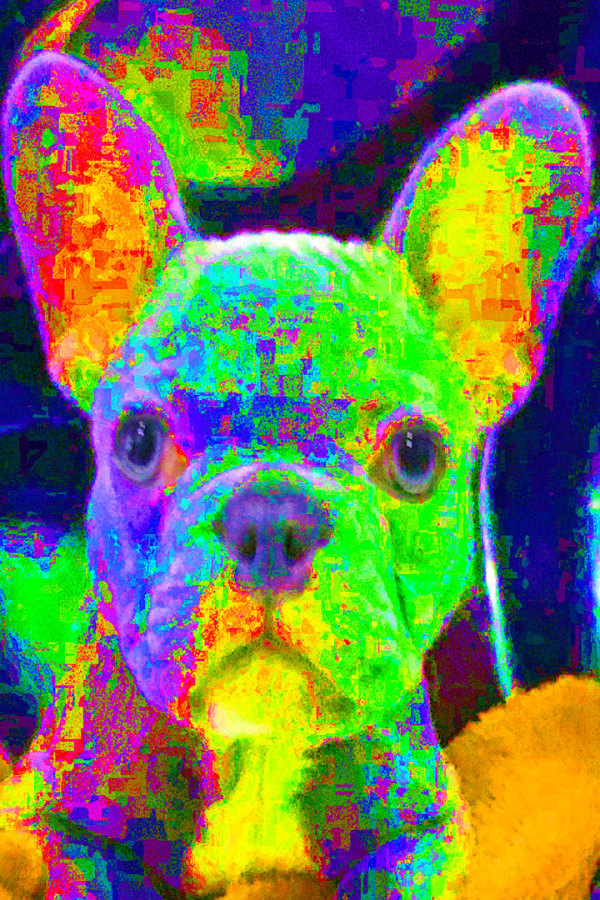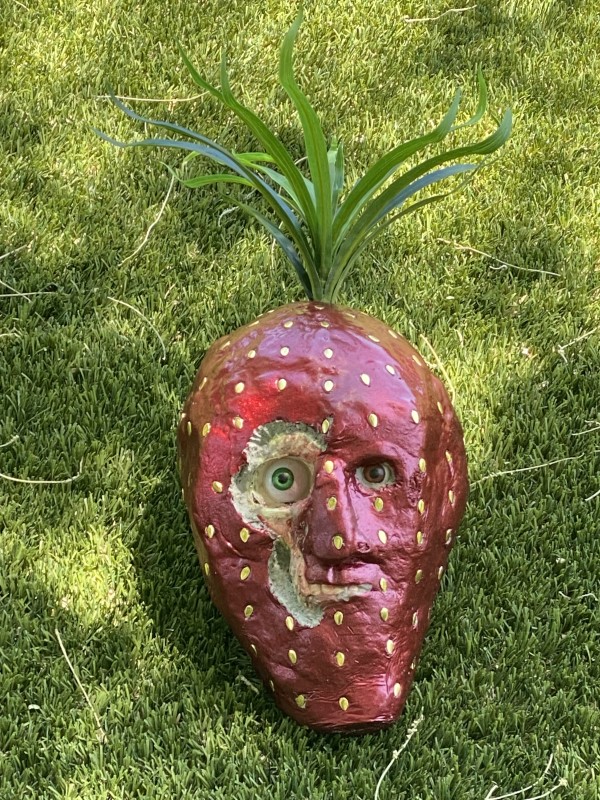The artwork presents a vivid scene featuring five faceless, purple-toned human figures outlined in yellow, all engrossed in their smartphones. The figures are arranged on a grassy field against a bright blue sky. Above the figures, several TWITTER bird silhouettes are depicted, some solid and some outlined, with dotted lines connecting the phones to the birds, symbolizing digital communication or social media interaction.
To the left, there is a large tree with green foliage and red fruits. A serpent is coiled around the tree trunk, and a Daliesque melting clock is draped over a branch. Near the base of the tree a scale lies on the ground. To the right, one slim female figure stands facing a tall mirror with a rounded top. Her reflection depicts an obese woman; fleshed-out pink human form with visible breasts and body features, contrasting the simplified purple figures. The mirror image does not reflect reality.....the image is distorted and ballooned. There is a cell phone on the grass in front of the mirror.
The whole composition conveys themes of technology, social media, perception of self, and perhaps the contrast between real identity and digital personas. The bold colors and abstract forms create a dynamic, thought-provoking visual narrative.
I originally created this acrylic on canvas painting “Girl B4 the Mirror” in 2022 as a tribute to Pablo Picasso’s famous oil on canvas painting “Girl before a Mirror” which he created in 1932. Picasso’s painting is a portrait of his mistress and muse, Marie-Thérèse Walter, who is depicted standing in front of a mirror looking at her reflection.
I was fascinated by Picasso’s depiction of distorted reality between his muse and her image in the mirror. It was a brilliant visual metaphor of the difference in the way we see ourselves versus the way we actually appear. It is symbolic of the distortion of subjective perception within our own brains compared to objective reality.
When I painted my version of “Girl B4 the Mirror” I originally intended it as a tongue in cheek commentary on diet culture, as a twist on Picasso’s “Girl before a Mirror”. Emphasizing that our distorted values about appearance are exaggerated by the broad influence of social media on the minds of individuals and on our collective consciousness.
Our culture often insinuates that we can “never be enough” … thin enough, rich enough, smart enough, popular enough, good enough, etc.
Curtis Dickman MD



